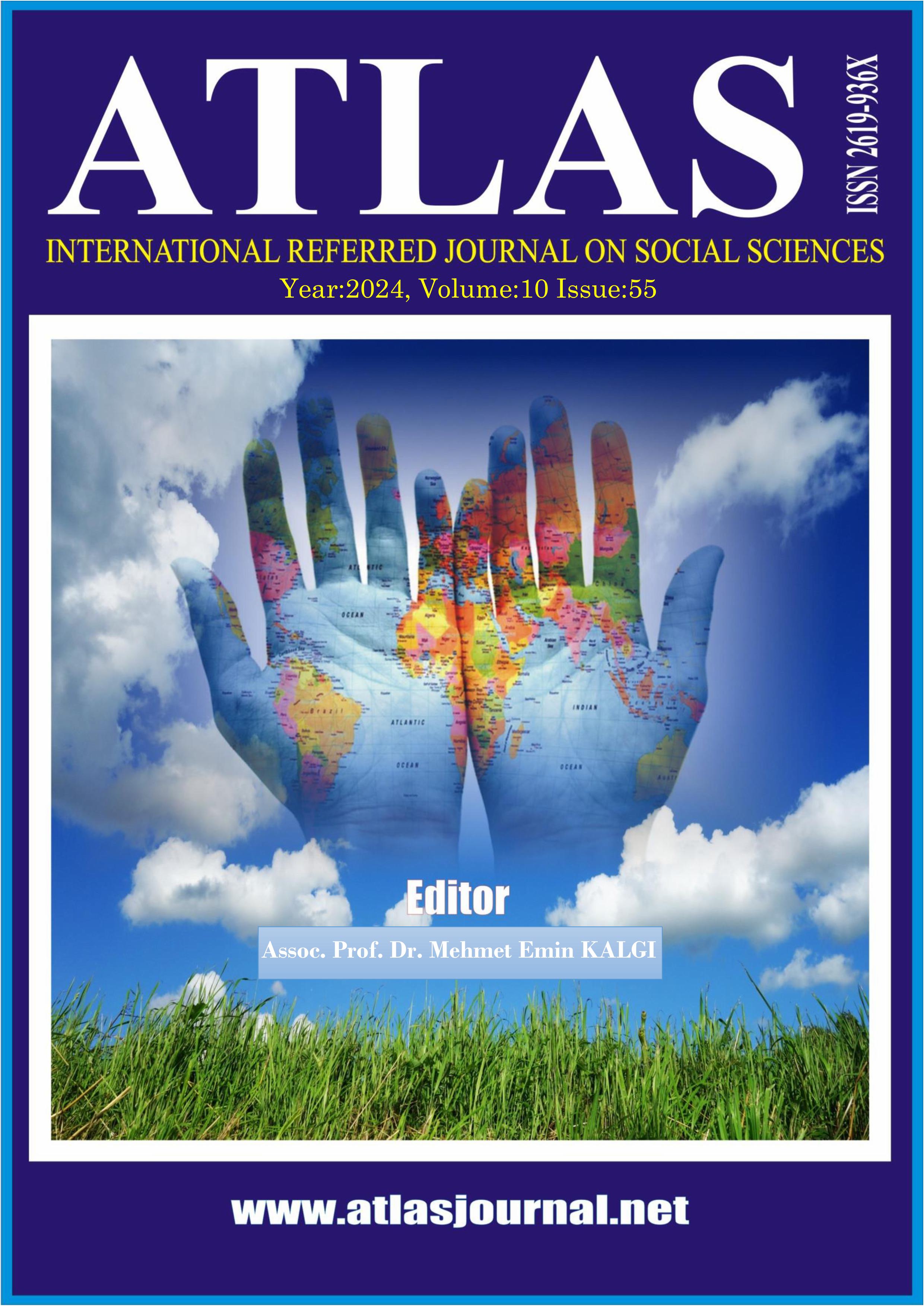A Review on Immersive Journalism and Its Application Areas
DOI:
https://doi.org/10.5281/zenodo.14510062Keywords:
Sanal Gerçeklik, Artırılmış Gerçeklik, Sürükleyici Habercilik, Metaverse, İnternet HaberciliğiAbstract
The most effective and advanced examples of immersive news, which can be categorized according to the technology used in the production and consumption of news and the position of the user, constitute immersive VR news. Immersive VR news refers to a virtual reality news product that allows users to experience certain events and certain conditions from a first-person perspective. However, immersive VR news involves the presentation of a limited and framed reality, selected by its producer from the flow of time, within a specific context and for a particular audience. Similar to a fictional novel that builds its power and impact with the support of its immersiveness, it creates empathy within the framework of its reader/viewer's personality, education, worldview, value judgments, racial, religious, and class prejudices and conveys its reality to the user within these limits. When we look at the limited examples of immersive VR journalism in the West, it is seen that its primary purpose is to draw public attention to national/international problems, environmental crises, and potential human rights violations, to create social awareness, and to mobilize a sense of empathy rather than informing the public. Immersive VR journalism offers significant potential for creating social consciousness and empathy. On the other hand, culture and arts news, documentaries, and sports news within the infotainment framework can be used as a different dimension of immersive VR journalism in today's conditions where users' expectations from journalism have increased with the developments in communication technologies. Immersive VR journalism, of which we see limited examples in the West, has not yet been realized at a mass level; the most common form of immersive news is 360-degree videos, of which we can see a few examples in our country. This study is based on the examination of immersive VR journalism, which has not yet become widespread in our country, within the framework of international examples. This study aims to contribute to the use of immersive VR news and journalism in national media by examining/evaluating it within the framework of potential risks and opportunities.
References
Çaba, D. (2018). “Dijital Çağda Değişen Haber Sunumu: Gazetecilikte Sanal Gerçeklik Uygulamaları”, e-GİFDER, 6(1): 691-723.
Dağ, P. (2015). Gazeteciliğin Geleceği: Veri Gazeteciliği. http://www. academia. edu/16286677/GAZETEC% C4% B0L% C4% B0% C
De la Peña, N.; Weil, P. & Llobera, J. & Spanlang, B. & Friedman, D. & V. Sanchez- Vives, M. & Slater. M.(2010). “Immersive Journalism: Immersive Virtual Reality for the First-Person Experience of News”, Presence: Teleoperators and Virtual Environments, 19 (4): 291–301.
Erken, F., & Birsen, H. (2021). “Cognitive Differences Between Online and Virtual Reality News in the Context of Recall and Comprehension”, Yeni Medya, 2021(10), 1-24.
Ferjoux, C. & Dupont, É. R. (2020). “Journalisme immersif et empathie : l’émotion comme connaissance immédiate du réel”, Communiquer [En ligne], 28 | 2020, mis en ligne le 22 mai 2020, consulté le 28 mai 2020. URL : http://journals.openedition.org/communiquer/5477.
Gökçe Narin, N. (2021). “A Content Analysis of the Metaverse Articles”, Journal of Metaverse, 1(1): 17-24.
Hardee, G. M. & McMahan, R. P. (2017). “FIJI: A Framework for the Immersion-Journalism Intersection”, Frontiers in ICT, 4(21): 1-18. https://doi.org/10.3389/fict.2017.00021.
Jones, S. (2017). “Disrupting the narrative: immersive journalism in virtual reality”, Journal of Media Practice, 18:2-3: 171-185, DOI: 10.1080/14682753.2017.1374677
Kavaklı, N. (2018). “Drone’ların Gazetecilikte Kullanımı: Drone Haberciliğinin Olanakları, Zorlukları ve Sınırları”, Erciyes İletişim Dergisi, 5(3), 160-172. https://doi.org/10.17680/erciyesakademia.345792
Koçak, D. (2020). “Medyada Dönüşüm ve Sanal Gerçeklik Gazeteciliği”, 2. Uluslararası Yeni Dünyada İletişim Kongresi (s.91-109). 2-4 Ekim 2020, Ankara. Erişim adresi: https://www.researchgate.net/publication/346931134.
Kukkakorpi, M. & Pantti M. (2020). “A Sense of Place: VR Journalism and Emotional Engagement”, Journalism Practice. DOI: 10.1080/17512786.2020.1799237.
Mechdine. https://www.mechdyne.com/av-vr-solutions/immersive-virtual-augmented-reality/cave/, Erişim Tarihi: 04.12.2024.
Mystakidis, S. (2022). Metaverse. Encyclopedia 2022, 2, 486–497. https://doi.org/10.3390/ encyclopedia2010031.
Okkay, İ. (2023). “İletişim Kuramları Bağlamında Metaverse”, TRT Akademi, 8(17): 8-37. https://doi.org/10.37679/trta.1198114.
Project Syria (2014). https://docubase.mit.edu/project/project-syria/, Erişim Tarihi: 04.12.2024.
Sanal Gerçeklik Nedir? Tiridi, https://www.tiridi.com/sanal-gerceklik/sanal-gerceklik-nedir.htm, Erişim Tarihi: 10.09.2024.
Sanchez-Acedo, A.; Carbonell-Alcocer, A. & Gertrudix, M. & Rubio-Tamayo, J.L. (2023). “Metaverse and Extended Realities in Immersive Journalism: A Systematic Literature Review”. Multimodal Technol. Interact, 7,96. https://doi.org/10.3390/ mti7100096.
Sánchez Laws, A. L. (2017). “Can Immersive Journalism Enhance Empathy?”, Digital Journalism, DOI: 10.1080/21670811.2017.1389286.
Soler-Adillon, J. & Sora, C. (2018). Immersive Journalism and Virtual Reality, Interaction in Digital News Media, Pérez-Montoro, Palgrave Macmillan.
Şahin, M., & Avşar, Z. (2023). “Sanal Gerçeklik ve Gazetecilik: Yeni Roller Yeni Arayışlar” TRT Akademi, 8(17): 66-81. https://doi.org/10.37679/trta.1222677.
Şirin, A. (2023). Siber Hastalık. https://www.ahmetsirin.com/siber-hastalik-cyber-sickness, Erişim Tarihi: 04.12.2024.
Van Damme, K.; All, A. & De Marez, L. & Van Leuven S. (2019). “360° Video Journalism: Experimental Study on the Effect of Immersion on News Experience and Distant Suffering”, Journalism Studies. DOI: 10.1080/1461670X.2018.1561208
Yetkin, B. (2022). “Yeni Bir Tür Olarak Sürükleyici Gazetecilik: Metaverse Gazeteciliğine Doğru”, Akdeniz Üniversitesi İletişim Fakültesi Dergisi (38): 105-125. https://doi.org/10.31123/akil.1144071
Wu, H., Cai, T., Luo, D., Liu, Y., & Zhang, Z. (2021). Immersive virtual reality news: A study of user experience and media effects. International Journal of Human-Computer Studies, 147, Article 102576. https://doi.org/10.1016/j.ijhcs.2020.102576
Yöndem, T., & Karadağ, G. H. (2019). “Artırılmış Gerçeklikle Değişen Haber Sunumu”, Yeni Medya Elektronik Dergisi, 3(1), 22-44.
Downloads
Published
Versions
- 2024-12-25 (2)
- 2024-12-25 (1)
How to Cite
Issue
Section
License
Copyright (c) 2024 Atlas Journal

This work is licensed under a Creative Commons Attribution-NonCommercial 4.0 International License.


